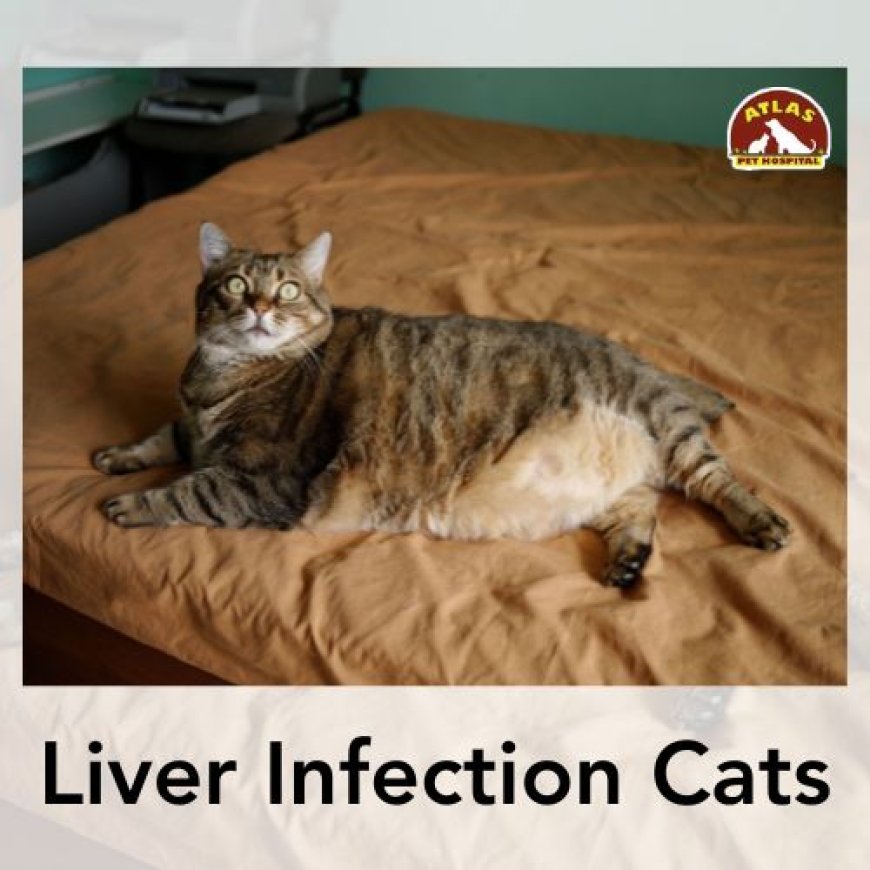Have a Look at This Complete Guide to Cats with Liver Disease
When the cats with liver disease show signs, the pet owners may get confused.

Cats and liver disease are problematic. All cat lovers know that they can not see their furry friend in trouble. But what if the cat is hiding it well from you? There are several signs that will not keep it hidden. When the cats with liver disease show signs, the pet owners may get confused. The cat may look tired. They even lose interest in food. Some cats even vomit without any warning. Let’s find out more about these. Focusing on liver disease in cats makes the pet owners aware of critical conditions.
Here is When the Liver Takes a Hit
Do you know that your cat’s liver may be affected and you are unaware of it? So, here is exactly when the liver can take a hit. Liver problems can start slowly. Sometimes they are sudden. In both cases, the danger is real. A liver infection that cats suffer can trigger swelling. It can block bile flow. It can push toxins back into the bloodstream.
The scary part is that signs are subtle. Cats may hide pain. They may rest more. They may stop grooming. Owners might think it is laziness. But it is the liver screaming for help. Cats cannot tell us what hurts. We must notice before it is too late.
Do you know Hepatitis Is Not Just a Human Problem?
Many people think that hepatitis is just a human disease. Wait! It is not the only case. Hepatitis in cats is real. It means the liver is inflamed. Inflammation can be short-term or long-term. Short-term hepatitis can come from infections or toxins. Long-term hepatitis may be linked to immune system attacks or chronic illness. Both forms damage liver cells. Both forms lead to scarring if untreated.
Hepatitis in cats does not look dramatic at first. Jaundice may appear. The gums may turn yellow. The whites of the eyes may turn yellow. Appetite may vanish. Weight loss follows. Spotting these changes early can save lives.
Some Clear Signs That Shout Without Words
Various signs can be seen when your little furry friend faces a problem with the liver. You must learn about them. Here is a section that will tell you about the signs of cats with liver disease and reveal their struggles. The signs are often silent but clear once you know them.
-
Yellow gums or eyes
-
Refusal to eat
-
Sudden weight loss
-
Vomiting that repeats
-
Swollen belly from fluid build-up
-
Lethargy that seems endless
Each sign means the liver is stressed. Some cats show only one sign. Others show many. But none should be ignored.
See How Vets Detect the Hidden Trouble
A vet is like the main hero for any cat with any health issue. So, they also play a part in diagnosing cats with liver disease. They follow the careful steps and do not just guess. They perform blood tests to measure liver enzymes. High levels mean damage. Ultrasounds give pictures of the liver's shape and size. Biopsies reveal cell damage or infection.
These tools help vets separate hepatitis in cats from other illnesses. They guide treatment. Without them, treatment would be blind. Diagnosis is not about labeling. It is about saving time. Early detection means better chances.
Here are the Treatments That Give Hope
Well, there are some treatments that are clearly effective for cats with liver issues. When the diagnosis is confirmed, treatment begins. But the right one matters. Liver infection in cats often needs antibiotics. Parasite cases need dewormers. Toxin cases need flushing and support. For hepatitis in cats caused by immune disease, vets use steroids or immunosuppressant drugs. Nutritional support is also vital. Special diets reduce liver strain.
Fluids prevent dehydration. Supplements like milk thistle support healing. Sometimes surgery is needed if the bile ducts are blocked. Each case is different. But one thing is the same. Treatment works best when started early.
Note that Prevention Is Always Easier Than a Cure
Many pet owners go for treatments. But they avoid the common precautions that may be easier to perform. Here, the best way to handle hepatitis in cats or other liver issues is to prevent them. Keep toxins out of reach. Avoid giving human drugs without vet approval. Maintain a healthy weight. Vaccinations also help.
Some liver infections are preventable diseases. Clean water and safe diets reduce risks. Routine vet visits are priceless. They catch problems before they grow. Prevention is not dramatic. But it saves heartbreak later.
FAQs
Here are some of the most often asked questions about cats with liver diseases. They will give you more insights to learn about them.
Q1: Can cats fully recover from liver disease?
Yes. With early treatment, many cats recover. Some need lifelong management but still live well.
Q2: How long can a cat live with liver disease?
It depends on the cause. Some cats live years with managed care. Others may decline fast if untreated.
Q3: Is hepatitis in cats contagious to humans?
No. Most forms of hepatitis in cats are not zoonotic. They do not pass to people.
Q4: How can I tell if my cat’s yellow eyes mean liver trouble?
Yellow eyes or gums often point to jaundice. This is a sign of liver stress. A vet must confirm.
Q5: Should I try home remedies for liver problems?
No. Home remedies may harm more than help. Always seek vet guidance.
Last But Not Least
So, the truth is in front of you. You can clearly see that cats with liver disease need attention. They cannot wait. Their signs are small, but their risks are big. Liver infection in cats and hepatitis in cats are serious. But they are not hopeless. With vet care. With good diets. With owner love. Cats can bounce back. Your job is to notice. Your job is to act. The liver may be silent. But your response must be loud. If you need professional help, trust Atlas Pet Hospital. They will help you with the proper care your cat needs.
































